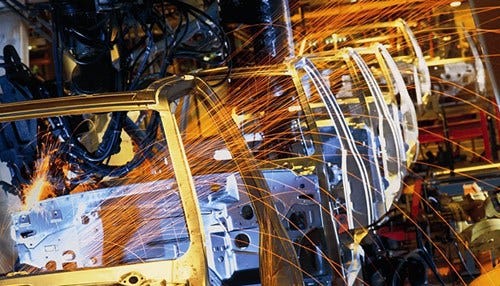Report Shows High-Tech Factor Drives Indiana Manufacturing
 The report shows automotive-related manufacturing accounts for the largest share of advanced industries jobs in Indiana.
The report shows automotive-related manufacturing accounts for the largest share of advanced industries jobs in Indiana.
Subscriber Benefit
As a subscriber you can listen to articles at work, in the car, or while you work out. Subscribe NowA recent report that combs through a myriad of statistics associated with the U.S. manufacturing industry reveals that Indiana’s manufacturing economy is very strong. The report’s author notes, in terms of the share of the economy, Indiana’s only competitors are Colorado’s aerospace sector and the high-tech sector in Connecticut and Massachusetts. However, the report underscores one concern that could impact Indiana’s manufacturing might: human capital and the state’s struggle to help the work force keep pace with the increasingly high-tech industry.
Issued by Ball State University’s Center for Business and Economic Research (CBER) and the state’s advanced manufacturing and logistics initiative Conexus Indiana, the report shows that STEM and white-collar employment in advanced manufacturing has grown, while blue-collar employment in the sector has either declined or remained the same each year since 2004. The study’s author and CBER Director Dr. Michael Hicks says Indiana leads the nation in the share of employment in advanced manufacturing.
“A little over half of all firms and workers in manufacturing in Indiana are in the high-tech sectors of manufacturing,” says Hicks. “The biggest portion of this in Indiana is in auto manufacturing of all types, from power trains to parts, trailers and metallic components. We’re also strong in pharmaceuticals and medical devices, and our legacy in machinery manufacturing is strong.”
Hicks says the trend of STEM and white-collar employment climbing while blue-collar employment declines is support for the argument that automation has contributed to the shift over time. It’s a sentiment echoed by Hoosier manufacturers; leaders at automotive supplier Faurecia, which has three locations in Columbus, say new technologies are “incredibly beneficial.”
“We have large robots, small robots, automated intelligent vehicles moving material from station to station throughout the process, digital displays instead of the old marker board or papers—everything is digitized,” says Faurecia Emissions Control Technology President Dave DeGraaf. “The real-time information we can gain from that is incredible in terms of proactive maintenance versus reactive maintenance, for example.”
Hicks cautions, as with other high-paying, technologically-intensive industries, the role of human capital is paramount. The study shows that Indiana has gaps in secondary and post-secondary training and ranks “no better than average” in the skills areas on which advanced manufacturing depends.
Faurecia employs about 1,700 Hoosiers currently, but is looking to grow that number to 2,100 when it opens a new facility in Columbus later this year. DeGraaf says Faurecia struggles to find new workers to operate the advancing technologies.
“You’ve got a strong economy in Columbus and in Indiana, you have manufacturers coming into this space because of the business climate here, which is very good—but the employable work force is becoming scarcer,” says DeGraaf. “Digital enterprise, robots, automation—everything that makes the manufacturing space in Indiana that much better takes a different quality of work force to operate; more technically-skilled.”
Faurecia works with training providers in Indianapolis and Columbus to help develop curriculum that matches its needs. With some added on-the-job training, DeGraaf says the workers “are ready to step into a role.” He acknowledges various efforts within Indiana to grow the pool of highly-skilled workers will take some time to produce results.
Hicks notes increasing investments in early childhood education should be a priority in Indiana, because it will improve retention in secondary and post-secondary training. He says the need for more highly-trained workers will continue to grow; between 2010 and 2013, the state’s growth in advanced manufacturing employment climbed 1.8 percent, placing it in the top 25 percent nationally.
Hicks believes focusing on work force development will continue Indiana’s legacy of building products for generations to come and ensure the health of an industry that drives Indiana’s high-tech economy.
DeGraaf says real-time feedback from production floor technology helps Faurecia practice “proactive maintenance,” instead of “reactive maintenance.”
DeGraaf says, in addition to high-tech machinery, there’s a shift in how employees must work together to complete projects.
